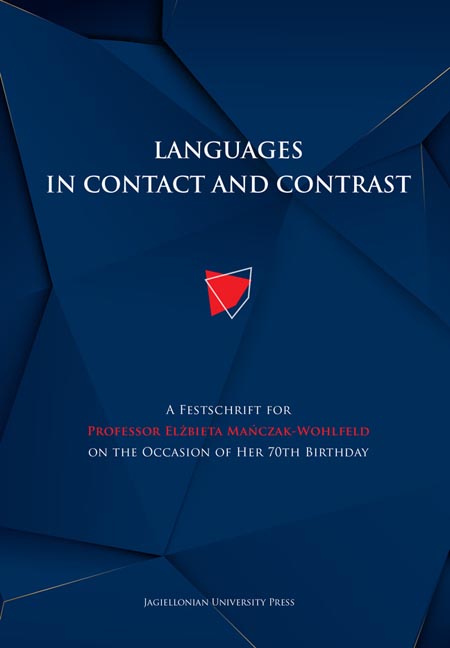 Languages in Contact and Contrast
Languages in Contact and Contrast Published online by Cambridge University Press: 14 October 2023
Introduction
An analysis of the vast quantity of lexical material constituting Polish dialectal plant names indicates that many of them are not actually of folk provenance. A large number of native, even homely sounding Polish and Slavic dialectal plant names that would seem to be authentically dialectal in form, that is, were created on a dialectal basis, are in fact of more ancient origin, and in some cases they are even foreign names with often complicated roots. It is significant that Polish and Slavic dialectologists have not paid much attention to this question. This is because for the most part they have not focused on the origin of names, even if a few observers have noted that some Polish dialectal plant names are not recent creations and are in actual fact recorded in old herbaria. In the majority of cases, however, these names were considered to be the products of dialect users. Nevertheless, they have an extremely interesting history, not only because they were inherited but also in view of the fact that many are calques or loanwords. These calqued terms, sometimes dating to the Middle Ages, have continued to survive as dialectal names in individual Slavic languages.
The purpose of this paper is to present Polish dialectal plant names of foreign origin. As is well known, the dialectal names of plants come from several sources: some are inherited names, some are terms taken from standard language, some are authentic dialectal names (originating in Polish dialects), and some are new calques and new loanwords. The above-mentioned inherited names can be divided into native names, old calques and old loanwords. The sources of Polish dialectal plant names are presented in Figure 1 below (after Waniakowa 2012: 187, see also Waniakowa 2018: 116).
In this paper I have focused on dialectal names of foreign origin, that is new and old loanwords as well as new and old calques. It should be emphasized at the outset that a number of standard Polish plant names that are also present in dialects are likewise of foreign origin. They include both loanwords and calques. In this way, standard Polish names that appear in dialects constitute another source of foreign influence.
To save this book to your Kindle, first ensure no-reply@cambridge.org is added to your Approved Personal Document E-mail List under your Personal Document Settings on the Manage Your Content and Devices page of your Amazon account. Then enter the ‘name’ part of your Kindle email address below. Find out more about saving to your Kindle.
Note you can select to save to either the @free.kindle.com or @kindle.com variations. ‘@free.kindle.com’ emails are free but can only be saved to your device when it is connected to wi-fi. ‘@kindle.com’ emails can be delivered even when you are not connected to wi-fi, but note that service fees apply.
Find out more about the Kindle Personal Document Service.
To save content items to your account, please confirm that you agree to abide by our usage policies. If this is the first time you use this feature, you will be asked to authorise Cambridge Core to connect with your account. Find out more about saving content to Dropbox.
To save content items to your account, please confirm that you agree to abide by our usage policies. If this is the first time you use this feature, you will be asked to authorise Cambridge Core to connect with your account. Find out more about saving content to Google Drive.